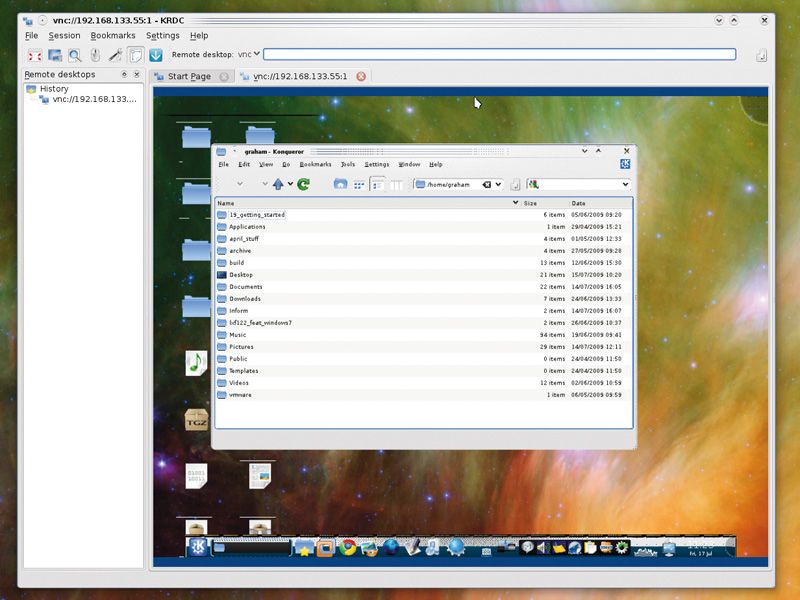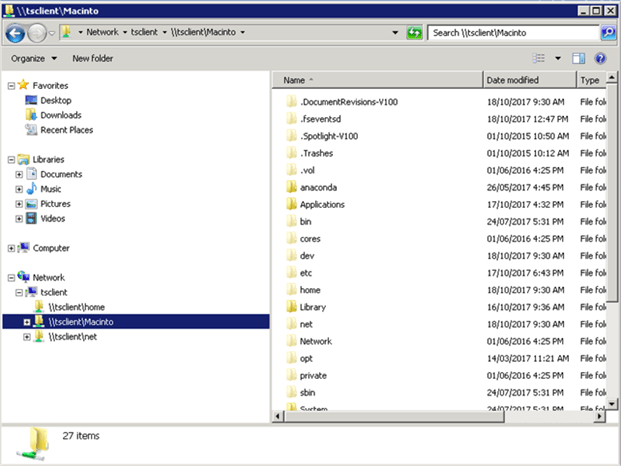Linux Remote Desktop For Mac

Higher Education Knowledge Base content management, sharing and collaboration platform.
- 1Remote Windows Access
- 2Remote Linux Access
- 3Remote Mac Access
- 4Firewall Restrictions
Remote Windows Access
- User interface and multi-platform compatibility play a significant role in choosing a remote desktop app. Zoho Assist covers these requirements so you can connect confidently with a wide variety of remote devices including Windows, Mac, Linux, Ubuntu, Android and iOS.
- Choose Dameware® for Linux remote control as well as Windows and Mac OS X compatibility. Robust security. Linux remote access demands business-grade authentication methods and high-level encryption. Troubleshooting tools. Helpful technician tools are built into the all-in-one remote Linux troubleshooting solution. Utilities access.
The CS Department maintains a server for Remote Desktop access, to which you may connect from anywhere on- or off-campus.

If you are connecting from an on-campus location, please be sure to NOT use the KSU Guest WiFi network. See: KSU Guest WiFi Network
If you are connecting from off-campus, you must be connected to the campus VPN before you can connect to the Remote Desktop servers. See the KSU VPN page for details on how to obtain and use the VPN client.
To login to Remote Desktop, you must use your eID and your eID password (This is the same password used for KSIS and Webmail). You also must add the USERS domain as a prefix for username, USERSyour_eID. There is no longer a distinction between CS users and Non-CS users, all users must use the eID password to log in.
Use the settings below to configure your session. Note: you must prefix your username with the domain name: USERSyour_eID
| Login With | Domain | Server |
|---|---|---|
| eID account | USERS | remote.cs.ksu.edu |

When you are done using the Remote Desktop session permanently, make sure to properly log out by selecting logout option within the Windows Start menu and do not simply disconnect your Remote Desktop session. If you wish to put a pause on your Remote Desktop session for a short period of time, disconnect your Remote Desktop session and you will be able to resume where you left off when you connect next time.
Remote Desktop Programs
Microsoft has a remote desktop application that has support on Windows, Mac, ChromeOS, iOS, and Android, that can be found in the respective store or Here.
For Linux there are a few Remote Desktop Applications, including KRDC and Remmina, which are both installed on the CS Systems.
Remote Linux Access
CS users have access to the department's public Linux shell server form anywhere, on- or off-campus.
Connecting from Unix-based machine (Linux, Mac OS X, BSD, Solaris)
To connect from a Unix-based machine, simply open a Terminal window and login using the following command. (Be sure to change <username> to your CS user account name. )
Connecting from Windows machine
To connect from a computer running Microsoft Windows, you will need to use a secure shell program, such as PuTTY.
Once you have putty downloaded, you will need to specify the server as shown in this screenshot.
Remote Mac Access
If you are connecting from an on-campus location, please be sure to NOT use the KSU Guest WiFi network. See: KSU Guest WiFi Network
If you are connecting from off-campus, you must be connected to the campus VPN before you can connect to the Remote Desktop servers. See the KSU VPN page for details on how to obtain and use the VPN client.
Logging In
In order to log into the remote Mac terminal server you will need a Remote Desktop (RDP) Client of some sort, such as Microsoft Remote Desktop.
After opening one of these applications you will just need to enter the the host name, which is remote-mac.cs.ksu.edu and your CS username and password.
Note: If you get kicked out of your session while trying to log in, then just go ahead and try to connect once more. Sometimes this will just let you in.
Accessing Personal User Drive
Meg and mog pdf. Here are the Steps on how to access your own personal CS network drive..
- Open 'Finder'
- At the top right of the Mac Desktop the word to the right of the apple should say 'Finder', from there select the 'Go' button.
- After clicking on the 'Go' button you will need to select the 'Connect to Server' option. It should be at the bottom of the list.
- In the 'Server Address' Text box all you will need to type in is 'smb://files.cs.ksu.edu/<your username>'
Firewall Restrictions
KSU Guest WiFi Network
Please Note: For SSH or RDP access to our remote access servers, you must not be connected to the KSU Guest wireless network. This network only allows web traffic on ports 80 & 443 (http/https) and nothing else.
If you are not a guest, please ensure you are connected to KSU Wireless or KSU Housing if you are on-campus.
Access Through Campus VPN
If you need access to any other CS system and don't want to go through one of the above hosts first, you may install the campus VPN client on your remote systems (home desktops, laptops, etc), which you can download here: http://www.ksu.edu/its/security/vpn/. When you run it, you should login with your KSU eID and connect using the 'Full Tunnel' option. This routes all your desktop network traffic through the KSU network, effectively putting your desktop behind the campus firewall. You can now use Remote Desktop or SSH client to connect to any CS system.
Microsoft Remote Desktop For Mac

